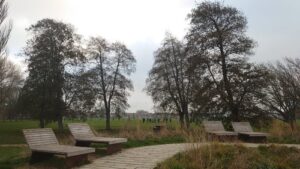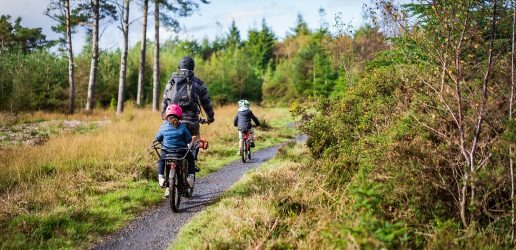
On 9 April 2022 forestry and tree organisations will be holding the UK’s first ever ‘mapathon’ in which hundreds of volunteers will undertake online tree canopy cover assessments of urban council wards across the UK.
The aim of this mapathon is to help complete the first ever UK-wide map of urban tree cover at a council ward level.

With 80% of urban council ward levels of tree cover now assessed over the past 2 years, the project led by Forest Research and involving the Woodland Trust, Trees for Cities and Brillianto, is calling on a band of volunteers to help them finish the map.
Once complete, the map will enable, for the first time, an understanding of levels of tree cover in urban areas across the UK and how this differs from city to city, within cities, and the average levels of tree cover.
More than three-quarters of local authorities have declared climate emergencies, and many are setting targets for increasing tree cover to help mitigate and adapt to the impacts of global climate change. However, the lack of baseline statistics makes it difficult to set targets and allocate funding. This project will enable local authorities to access baseline figures for tree canopy levels in towns and cities across the UK and support them to set more informed targets for maintaining and increasing tree cover in urban areas
The project uses a simple, free and easy to access online system – i-Tree Canopy – to assess tree cover. Volunteers complete an assessment which involves looking at points on Google Maps and indicating whether they are located over a tree or not. The system is used globally and the canopy cover assessments in the project have an accuracy level of better than 98%. Each assessment takes between 30 minutes to an hour.
Adam Cormack, Head of Campaigning at the Woodland Trust said: “Urban trees green our towns and cities, absorb carbon and clean our air. They even increase the value of our houses. Urban woods and trees do so much for people, wildlife and our economy. As we face both climate and nature crises, maintaining and expanding our urban tree cover is more important than ever before. This project and the volunteers that make it possible, will deliver a first of a kind vital resource that will really tell what tree cover is like in our towns and cities across the UK.”
Kieron Doick, the Project Lead at Forest Research said: “This is a really exciting time as we push to complete the canopy cover webmap in collaboration with our partners Trees for Cities, Brillianto and Woodland Trust. With the renewed interest in planting trees, the canopy cover map aims to help planting activities target areas of lower coverage to bring the benefits of trees to more people and help drive forward climate adaptation strategies.
“In anticipation, we thank all the volunteers who’ll be joining us for the mapathon, for their invaluable contributions. We’re looking forward to analysing the data to help understand differences in tree canopy cover across the towns and cities in the UK.”
Kate Sheldon, Deputy Chief Executive and Development Director at Trees for Cities said: “Trees are vital to keep our towns and cities as healthy, happy places to live. At Trees for Cities we use maps and data to help inform us where trees are most needed and where we should be planting to have the most impact for local people and places. i-Tree Canopy is a brilliant tool that will help us to plant more trees in the right places and to create leafy cities that are better adapted to climate change. So, make a cuppa and have a go at mapping your local area to help create a comprehensive UK tree canopy map – I’ve done it and found it fascinating!”
Sign up
[Registrations for this past event are now closed.]
On the Day
There are two sessions – one at 10am and one at 2pm. You can join either or both. Forest Research and Woodland Trust staff will give an introduction to the project in both sessions and will be on hand throughout the day to help people undertaking canopy cover assessments. No specialist knowledge required.

Forest Research has released the results of the Public Opinion of Forestry Survey 2025 for England and the UK, Scotland and Wales.
New research has been published which explores how to enable and encourage access to woodlands for diverse members of the public.
Forest Research has been involved in a project focusing on efforts to improve inclusivity in biosecurity practices by exploring how to integrate different knowledge systems into mainstream decision-making.

Forest Research has released the results of the Public Opinion of Forestry Survey 2025 for England and the UK, Scotland and Wales.
New research has been published which explores how to enable and encourage access to woodlands for diverse members of the public.
Forest Research has been involved in a project focusing on efforts to improve inclusivity in biosecurity practices by exploring how to integrate different knowledge systems into mainstream decision-making.